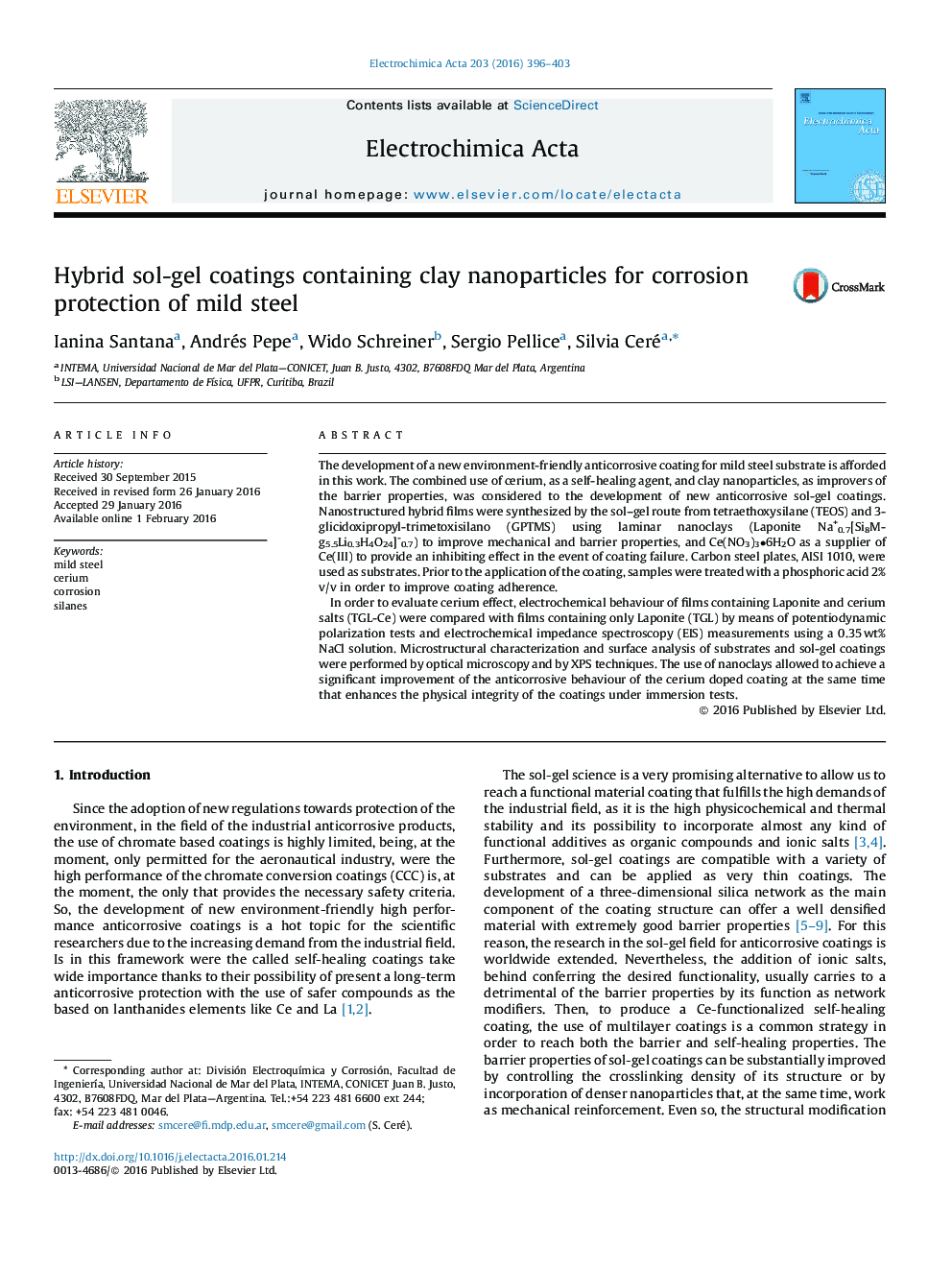| Article ID | Journal | Published Year | Pages | File Type |
|---|---|---|---|---|
| 182999 | Electrochimica Acta | 2016 | 8 Pages |
•Barrier properties of thin sol-gel coatings were improved with clay nanoparticles.•Self-healing effect was achieved with addition of Ce(III) ions in sol-gel films.•Clay nanoparticles and the cerium salt enhance corrosion protection of the mild steel.
The development of a new environment-friendly anticorrosive coating for mild steel substrate is afforded in this work. The combined use of cerium, as a self-healing agent, and clay nanoparticles, as improvers of the barrier properties, was considered to the development of new anticorrosive sol-gel coatings. Nanostructured hybrid films were synthesized by the sol–gel route from tetraethoxysilane (TEOS) and 3-glicidoxipropyl-trimetoxisilano (GPTMS) using laminar nanoclays (Laponite Na+0.7[Si8Mg5.5Li0.3H4O24]-0.7) to improve mechanical and barrier properties, and Ce(NO3)3•6H2O as a supplier of Ce(III) to provide an inhibiting effect in the event of coating failure. Carbon steel plates, AISI 1010, were used as substrates. Prior to the application of the coating, samples were treated with a phosphoric acid 2% v/v in order to improve coating adherence.In order to evaluate cerium effect, electrochemical behaviour of films containing Laponite and cerium salts (TGL-Ce) were compared with films containing only Laponite (TGL) by means of potentiodynamic polarization tests and electrochemical impedance spectroscopy (EIS) measurements using a 0.35 wt% NaCl solution. Microstructural characterization and surface analysis of substrates and sol-gel coatings were performed by optical microscopy and by XPS techniques. The use of nanoclays allowed to achieve a significant improvement of the anticorrosive behaviour of the cerium doped coating at the same time that enhances the physical integrity of the coatings under immersion tests.
